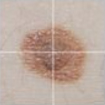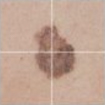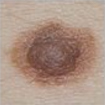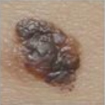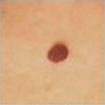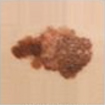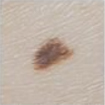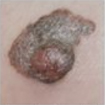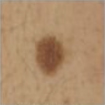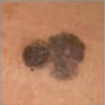Skin Cancer Prevention

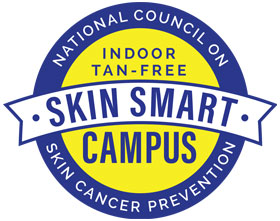 Molloy University has been recognized as a Skin Smart Campus by The National Council on Skin Cancer Prevention. Ensuring the well-being of our students, we are providing a safe and healthy learning and living environment on and off campus, pledging to keep indoor tanning devices off our campus and our affiliated buildings. We also promote skin cancer prevention policies and education.
Molloy University has been recognized as a Skin Smart Campus by The National Council on Skin Cancer Prevention. Ensuring the well-being of our students, we are providing a safe and healthy learning and living environment on and off campus, pledging to keep indoor tanning devices off our campus and our affiliated buildings. We also promote skin cancer prevention policies and education.
The Indoor Tan-Free Skin Smart Campus Initiative is sponsored by the National Council on Skin Cancer Prevention in response to the 2014 U.S. Surgeon General’s Call to Action to Prevent Skin Cancer which concluded that there is a strong association between increased risk of skin cancer and indoor tanning use. Ultraviolet (UV) radiation exposure from indoor tanning is completely avoidable which allows for interventions to help reduce skin-cancer related illness and deaths. Numerous studies have found that skin cancer is the most common type of cancer in the United States, with melanoma as one of the most common cancers diagnosed among young adults. According to The International Agency for Research on Cancer Working Group, the use of indoor tanning facilities before the age of 35 increases the risk for melanoma by 75 percent.
Skin cancer is the most common cancer in the United States
- The two most common skin cancers (basal cell and squamous cell carcinomas) are highly curable but can be disfiguring and costly.
- Melanoma (the third most common skin cancer) may be deadly.
- Ultraviolet (UV) radiation from the sun or from a tanning device can cause dangerous, lasting damage to your skin.
General risk factors include:
- Light skin, or skin that burns, freckles, or reddens easily; but skin of all colors can get skin cancer.
- Large number of moles
- Personal or family history of skin cancer
- History of sun exposure; skin damage is cumulative!
- History of sunburns, especially in early life
- History of indoor tanning
- the average tanning bed produces 2 to 10 times more UVA radiation than the sun.
- using tanning beds before the age of 35 increases a person's risk for developing melanoma by 75%
Skin of Color – includes people of African, Asian, Latino, Mediterranean, Middle Eastern, and Native American descent:
- Even if you have a darker skin tone, always tan or rarely burn, you can still get skin cancer.
- Skin cancer is often diagnosed later in people of color, making it harder to treat.
- Melanoma in people of color most often occurs on the palms of the hands, soles of the feet, under the nail (subungual) and in the nail areas.
- No matter your skin tone, UV radiation can lead to skin damage, premature aging, and hyperpigmentation. Protecting your skin is important!
How to Prevent Skin Cancer
The majority of skin cancers are caused by exposure to ultraviolet (UV) light and can be prevented with sun safety practices:
-
Seek Shade
- Find shade under a dense tree canopy, shade sail, or pavilion.
- Carry a sun umbrella for personal shade.
- Use a pop-up UV shelter when at the beach or park.
- Whenever possible, stay out of the sun from 10 AM - 4 PM when UV radiation is the strongest.
-
Wear Sunscreen
- Broad spectrum UVA and UVB, SPF 30 or higher
- Reapplication is necessary every 2 hours and after swimming, sweating, or toweling off.
- Most people do not put on enough sunscreen–aim for one ounce, which is about a palmful.
-
Wear Protective Clothing
- Long sleeves/pants with a dense weave or built in UPF.
- Wide-brimmed hat
- Closed-toe shoes and socks that cover the ankle.
-
Wear Sunglasses
- Choose sunglasses with a UV protective coating.
- Wearing sunglasses helps protect the delicate skin around our eyes.
- UV rays can also increase risk of cataracts & macular degeneration–it makes sense to protect your eyes!
-
Check the UV Index - Know Before You Go!
- The UV index can be found in most weather apps and also here: https://www.weather.gov/ilx/uv-index (scroll down for helpful chart)
- Dermatologists recommend sun protection when the UV index is 3 and above.
- As levels approach 6 and above, it’s best to limit your time in the sun.
| Exposure Category | Index Number | Sun Protection Message |
|---|---|---|
| Low | 1 – 2 |
No Protection Required Unless outdoors for extended periods, or near reflective surfaces such as snow or water. |
| Moderate | 3 – 5 |
Protection Required Slip on clothing. Slap on sunscreen, use sun protection factor (SPF) 30 for adults and 50 for children. Slap on a wide brimmed hat. Seek shade during midday hours. Slide on sunglasses, wraparound are best. |
| High | 6 – 7 | |
| Very High | 8 – 10 |
Extra Protection Required Avoid being outside during midday hours. Make sure you seek shade. Always wear sunscreen and protective clothing i.e. shirt, hat, and sunglasses. |
| Extreme | 11+ |
ABCDEs of Melanoma
Melanoma is the deadliest form of skin cancer. When detected early, melanoma is highly treatable. Know your skin. Perform a self-exam each month. You can even ask a partner or friend to look at your back and scalp. If you see any of these warning signs, show them to your provider right away.
Asymmetry: Moles that have an asymmetrical appearance
Border: A mole that has blurry and/or jagged edges
Color: A mole that has more than one color
Diameter: Moles with a diameter larger than a pencil eraser (6 mm or 1/4 inch)
Evolution: A mole that has gone through changes in size, shape, or color
ABCDEs of Melanoma
Melanoma is the deadliest form of skin cancer. However, when detected early, melanoma is highly treatable. Know your skin. If you see any of these warning signs, show them to your provider right away.
A |
Asymmetry: | Moles that have asymmetrical appearance |
Symmetrical |
Asymmetrical |
B |
Border: | A mole that has blurry and/or jagged edges |
Smooth borders |
Irregular borders |
C |
Color: | A mole that has more the one color |
Single color |
Multicolor |
D |
Diameter: | Moles with a diameter larger than a pencil eraser (6 mm or 1/4 inch) |
Smaller than 6 mm/0.2 in |
Bigger than 6 mm/0.2 in |
E |
Evolution: | A mole that has gone through sudden changes in size, shape, or color |
No changes |
Some changes |
Thank you to the University of Tennessee Health Science Center's Digital Content Team for creating the ABCDE and UV index charts.
